The Archaeological, Historical and Natural Park of the Rock Churches of Matera, or simply the Murgia Materana Park, is one of the most fascinating scenic and cultural wonders of southern Italy. It is a unique place where nature, history and spirituality come together in an area covering over 8,000 hectares, offering extraordinary landscapes and ideal routes for lovers of hiking, photography and history.
This park stretches along the deep gorges carved out over thousands of years by the Gravina di Matera and Gravina di Picciano, tributaries of the Bradano River, creating impressive and evocative canyons. It is located on the opposite side of the canyon from the Sassi di Matera, in an area that preserves a natural and archaeological heritage of great importance.
In 2007, approximately 1,000 hectares of the park were officially recognised by UNESCO as a World Heritage Site, together with the Sassi area, for their cultural and environmental value, which is unique in the world.

The Murgia Park
The rocky landscape of the park
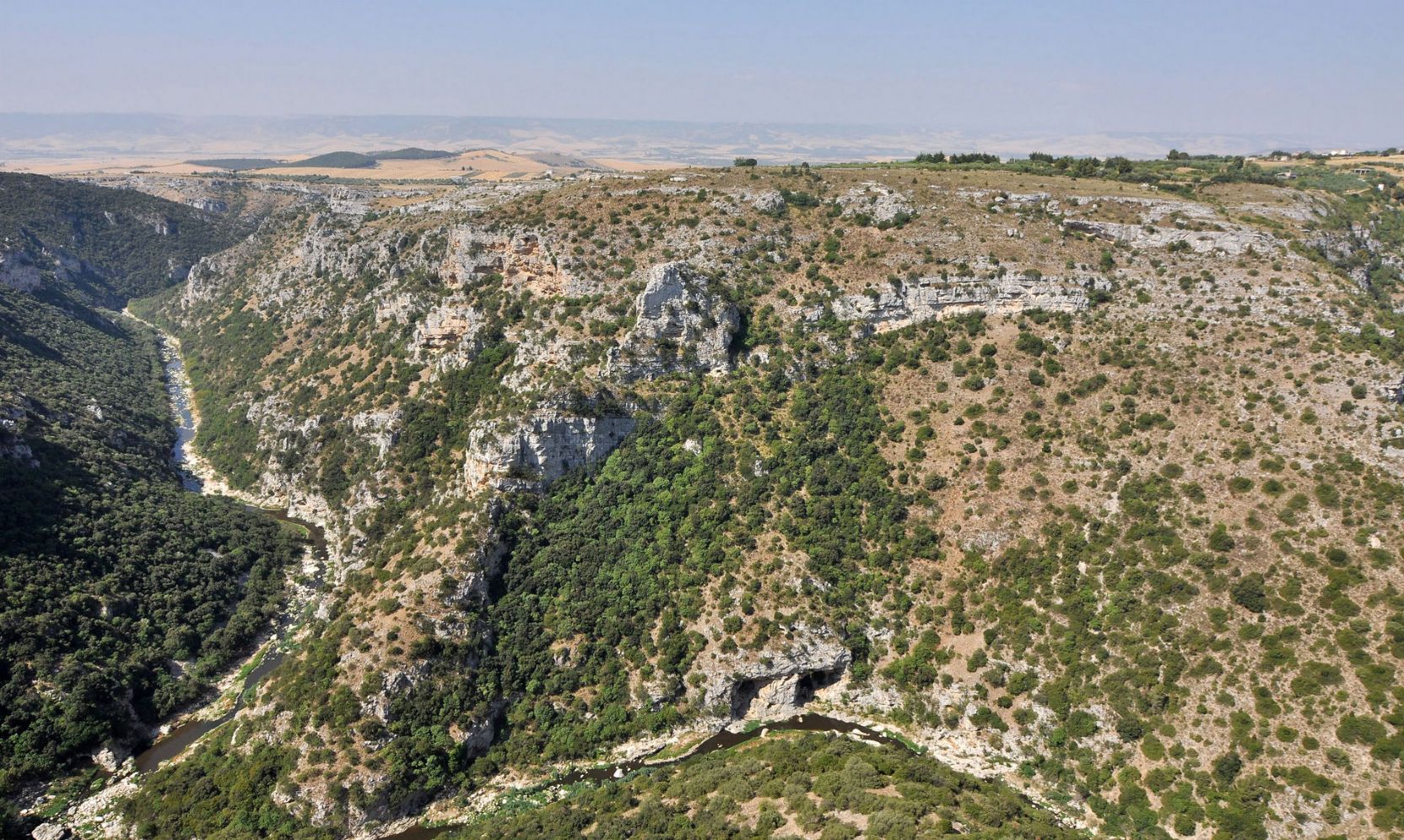
The Murgia Materana Park is a veritable treasure trove of history and nature, where the rocky landscape bears witness to human presence since the Lower Palaeolithic period. Along the canyons and plateaus of the area, there are numerous rock villages carved into the stone, visible traces of the settlements that have followed one another from prehistoric times to modern times.
After the medieval period, many of these ancient settlements, also known as rock farmhouses, were converted for agricultural and pastoral use, serving as shelters for livestock and spaces linked to rural life. This prolonged use has helped to preserve and stratify a unique cultural landscape over time, now accessible to those who wish to discover the authentic face of Basilicata.
In addition to the most visited areas of Murgia Timone, Murgecchia and Contrada Palomba, the park extends south of Matera, reaching the territory of the nearby municipality of Montescaglioso. This area, particularly rich in rock art, is home to the evocative settlements of Contrada Agna, which houses the famous Grotta dei Pipistrelli (Bat Cave), whose archaeological finds are kept at the Ridola National Museum.
Other sites of great value include the Ofra complex, the Santissimo Crocifisso alla Selva (also known as Cristo la Selva), the Saracen Village and the rock art area of Murgia Sant'Andrea, located in the countryside of Montescaglioso.
To the south, along the Gravina di Picciano, there are other important rock complexes, including Santa Lucia al Bradano and, above all, the extraordinary Cripta del Peccato Originale (Crypt of Original Sin). The latter, known as the “Sistine Chapel of rock art”, preserves frescoes dating back to the Lombard era, of inestimable historical, artistic and spiritual value.
Visit the Murgia Materana Park
Exploring the Murgia Materana Park is an unmissable experience for anyone visiting Matera, offering the chance to immerse yourself in a world where unspoilt nature meets rock archaeology. For those planning an itinerary in Matera, this stop is highly recommended and offers numerous excursion possibilities, including breathtaking views, ancient settlements and rock trails.Murgia Timone and the Park's Belvedere
One of the most iconic places is undoubtedly the Belvedere di Murgia Timone, located opposite the Sassi di Matera. From here, you can enjoy an unparalleled view of the entire canyon and the rock landscape. The belvedere is easily accessible by car, following the SS7 (Via Appia) towards Laterza, with dedicated signage.
Along the route leading to the viewpoint, you will encounter rock complexes such as San Nicola alla via Appia, Murgia Tre Ponti, and the rock church of San Falcione. At the foot of the viewpoint are the rock churches of Madonna delle Tre Porte and Sant'Agnese, while the Belvedere trail allows you to explore the eastern side of the Gravina, the Neolithic villages of Murgia Timone and the church of Madonna delle Croci. For longer routes, an expert guide is recommended.
Contrada Palomba
Located at the north-eastern entrance to Matera, Contrada Palomba is famous for its tuff quarries and the evocative Parco Scultura della Palomba, an open-air exhibition space created by artist Antonio Paradiso. His imposing iron and stone installations blend perfectly with the Murgia environment, offering a unique fusion of contemporary art and rocky landscape.
Not far away is the Sanctuary of Santa Maria della Palomba, one of the most important places of worship in Matera, built on an intricate rock complex that dramatically overlooks the Gravina di Matera.
Contrada Murgecchia
One of the most evocative and historically significant areas of the park, Contrada Murgecchia preserves some of the oldest evidence of human settlement in the Matera area. It can be accessed from the SS7, near the Sanctuary of Palomba.
Here you will find a Neolithic village that has been studied since the early 20th century thanks to the work of Domenico Ridola, as well as a Bronze Age necropolis and several rock settlements dating back to the early Middle Ages. This area is ideal for archaeological excursions and for learning more about the prehistoric roots of Matera's civilisation.

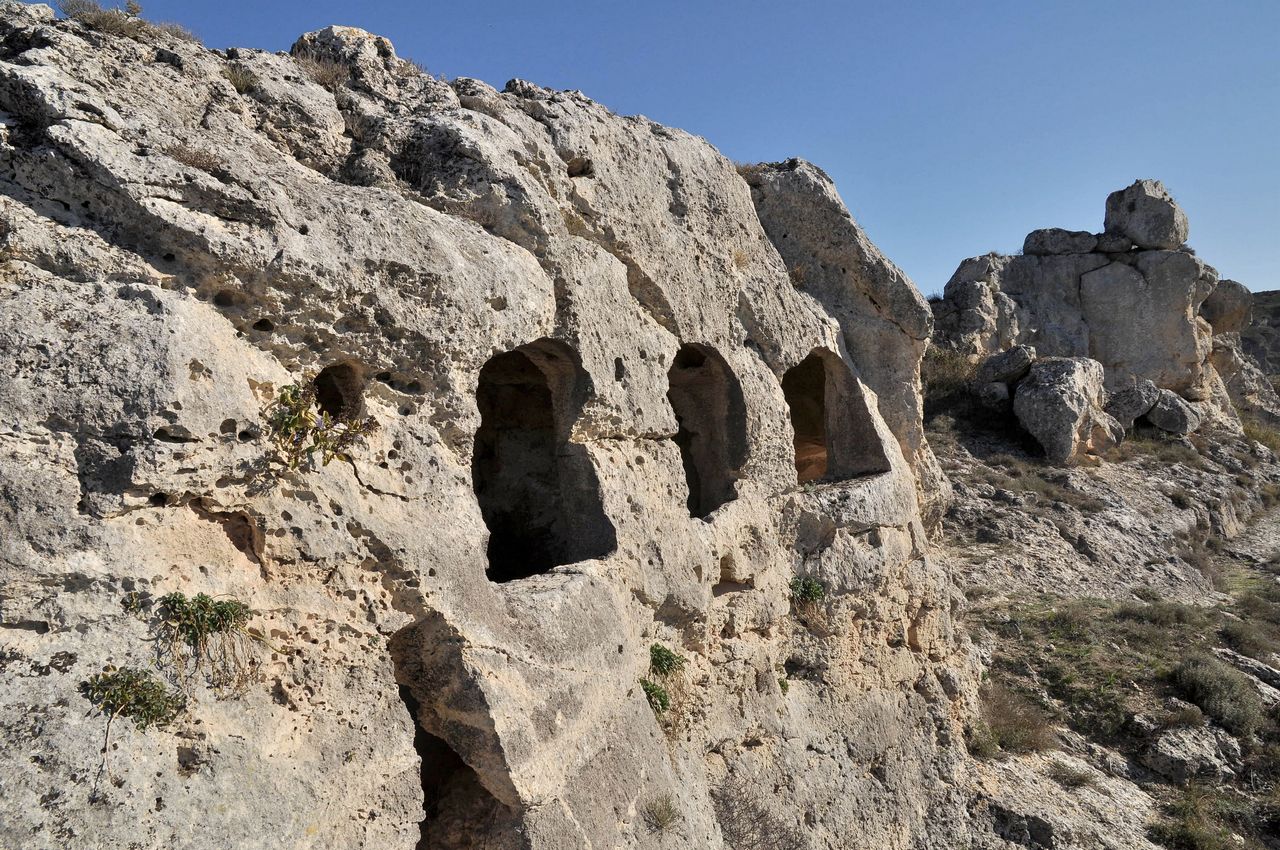
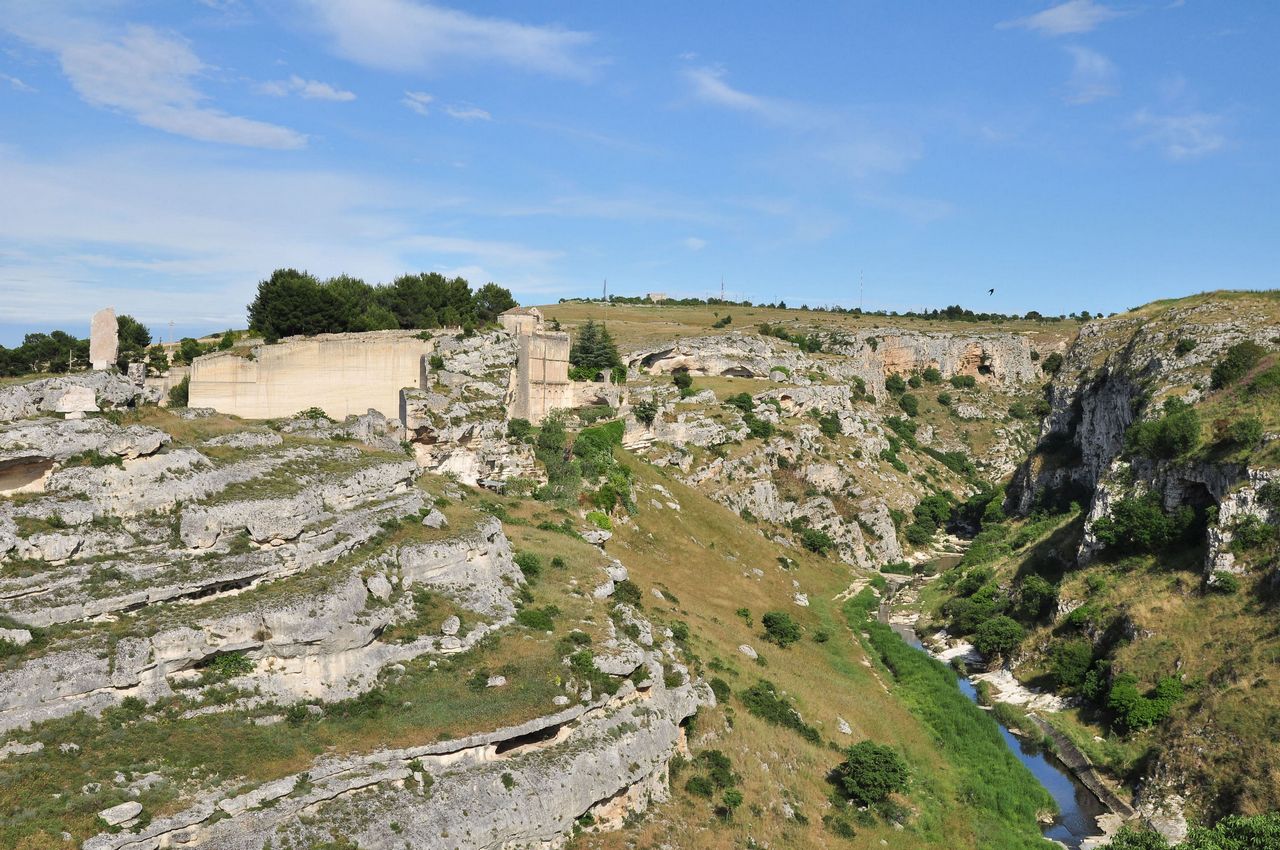
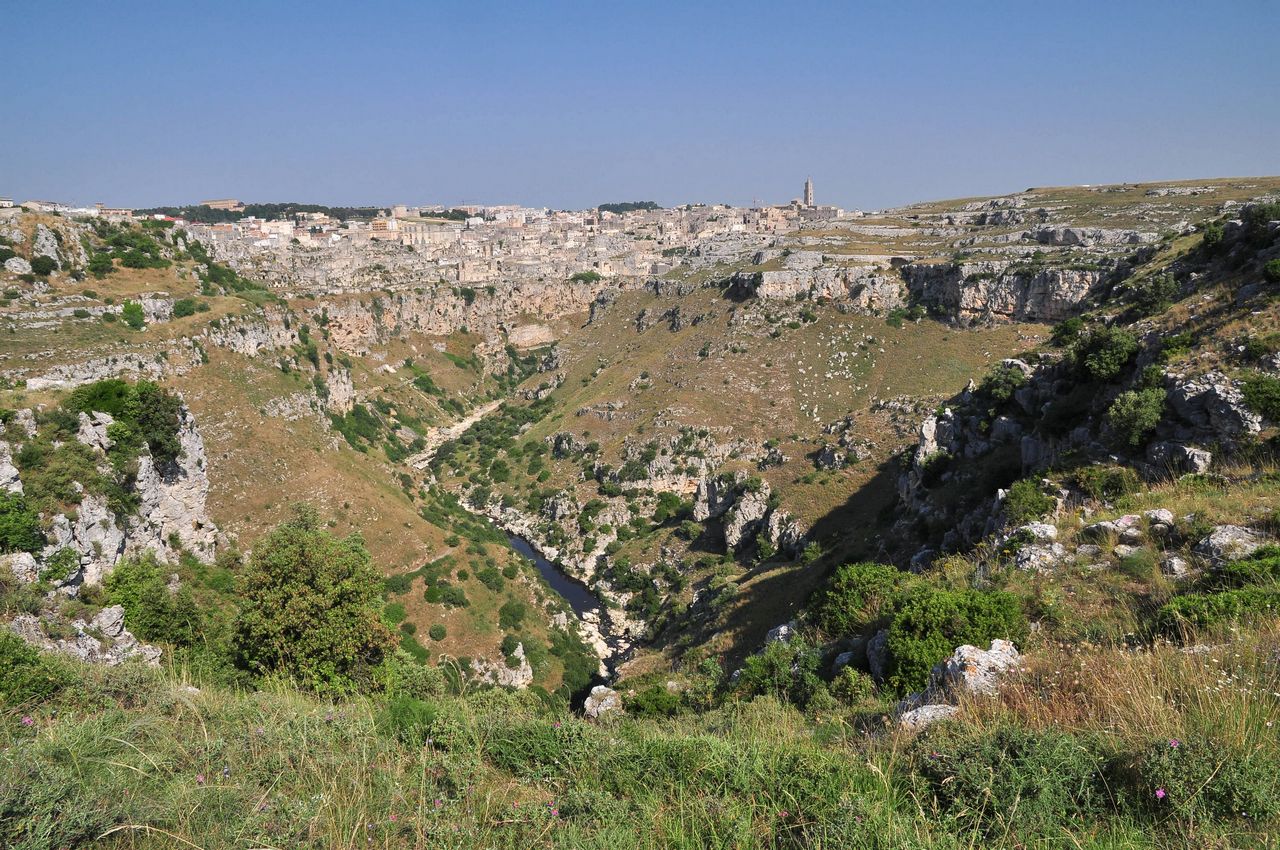
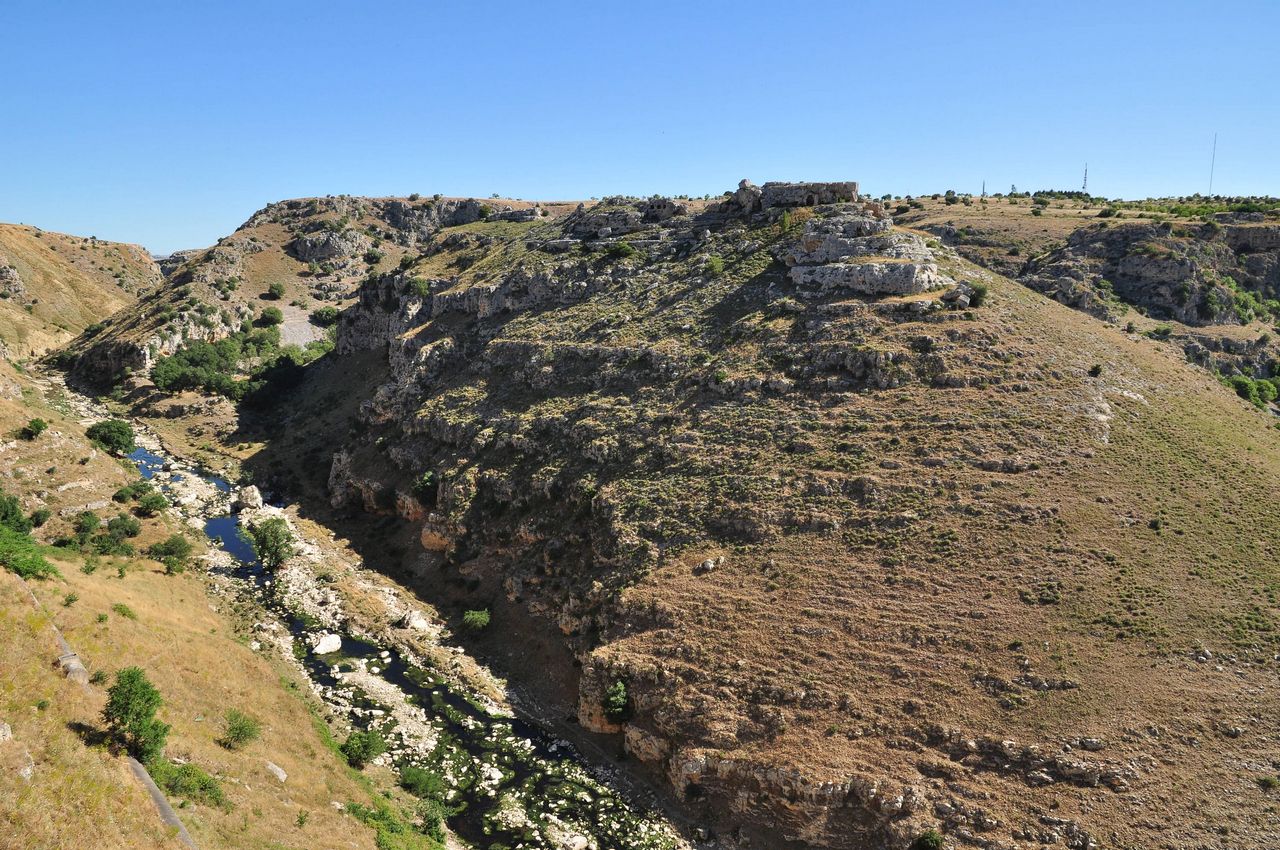
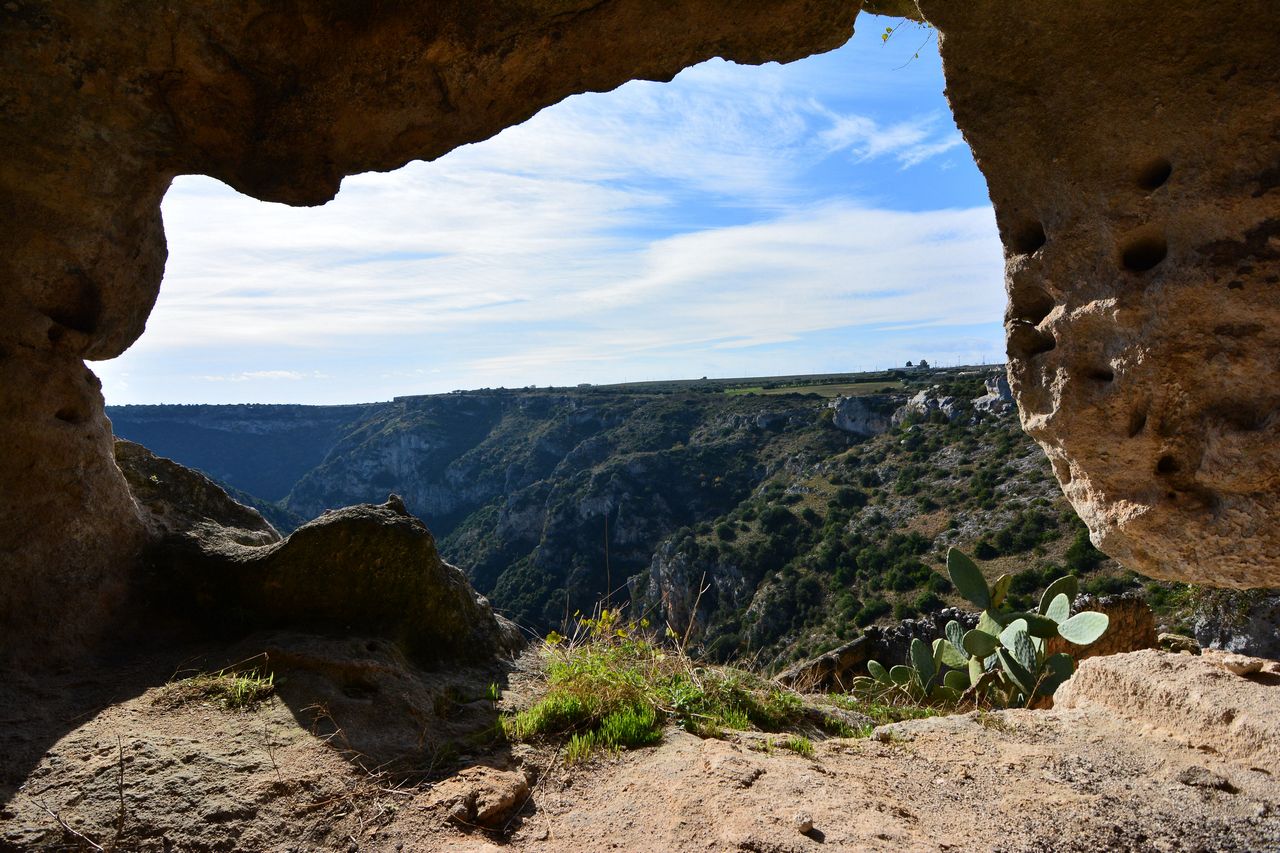

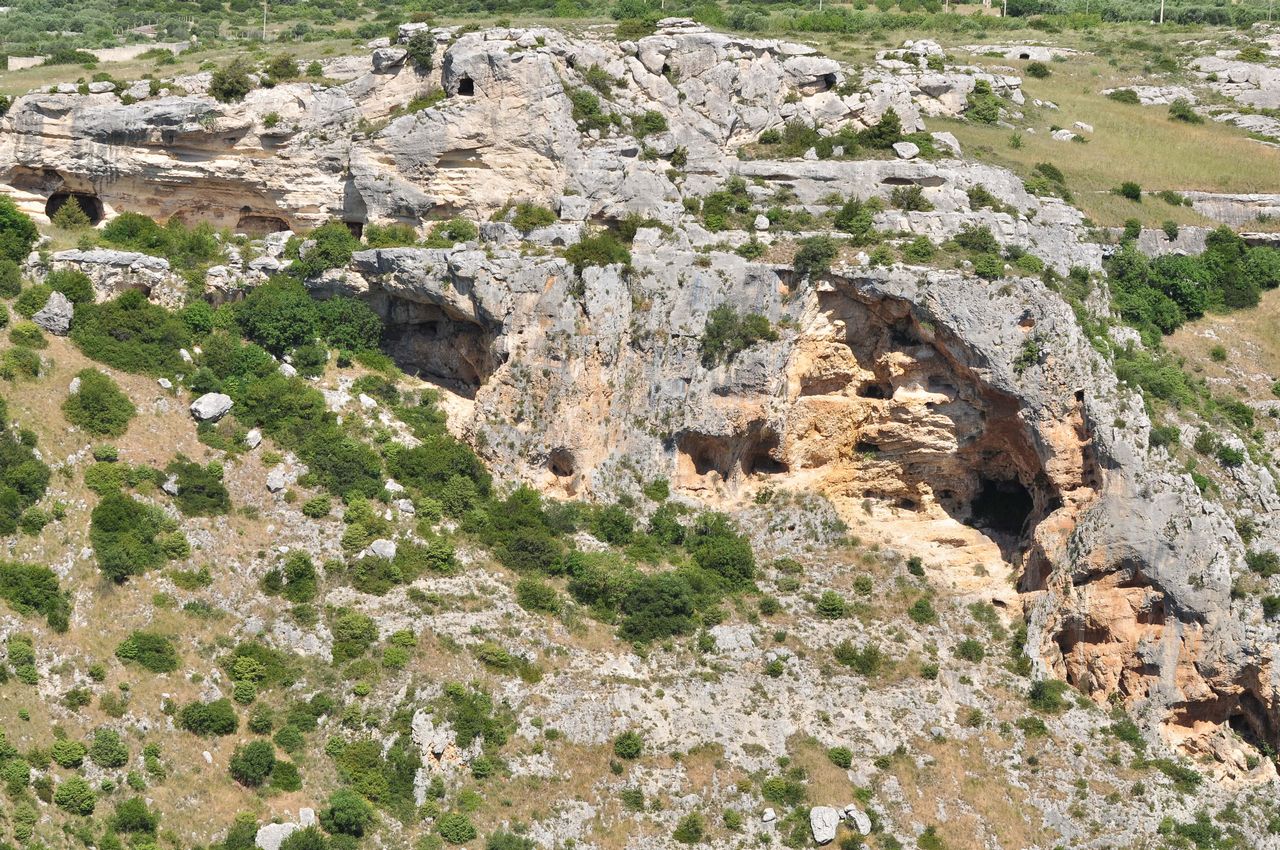


 Sito Italiano
Sito Italiano